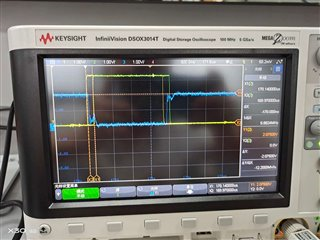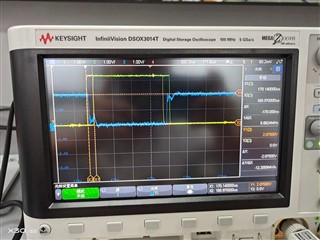Hi team,
There are only two nodes on the CAN bus. The termination resistance on both ends of the CAN bus is 120Ω. One node on the CAN bus is the [1] board and the other node is the [2] board. Baud rate 500K. The CAN circuit is as follows:

The following waveform is the waveform between the CANH and CANL of the [1] board.
CAN bus length 35 meters,

CAN bus length 8 meters

The problem cannot be solved by shorting L9, L10.
The waveform between the CANH and CANL of the [2]board is very good and has no problem.
Thanks,
Amy




